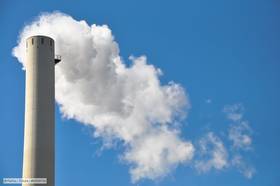More than 80 new waste incineration plants with a combined annual capacity of around 25 million tonnes went into operation worldwide in 2017, according to Ecoprog. The consultancy forecasts that this “dynamic growth” will continue in the coming years. In the eleventh edition of its annual "Waste to Energy" study, Ecoprog predicts that by 2027 almost 70 new plants with an average annual thermal treatment capacity of around 20 million tonnes will be built annually. The expansion of thermal waste treatment in China remains the driving force behind international growth, but at the same time, plant construction activity in countries which until now had played only minor roles was also increasing.
In 2017, it was again Asia that dominated new plant construction. According to Ecoprog, around 90 per cent of the newly built waste to energy (wte) capacity was built here – with China as the strongest market. Asia and China in particular will continue to dominate the wte market in the coming years. China is expected to continue to make substantial additions to its waste incineration capacity until it meets its targets under the current 13th Five-Year Plan. Thereafter, probably from 2022 onwards, capacity growth is expected to slowly decline. According to Ecoprog's forecast, new wte capacity in China will average around 12 million tonnes per year over the next ten years. India is also expected to add around 1.5 million tonnes of new capacity annually by 2027.
According to Ecoprog, waste incineration is also increasingly being used in South America, Africa and the Australia - Pacific regions. In Europe, the waste incineration plant market is also gaining new momentum due to the landfill diversion targets set in legislation the EU’s newly adopted waste package and the need to modernize the existing plants in traditional markets such as Germany and Denmark.

